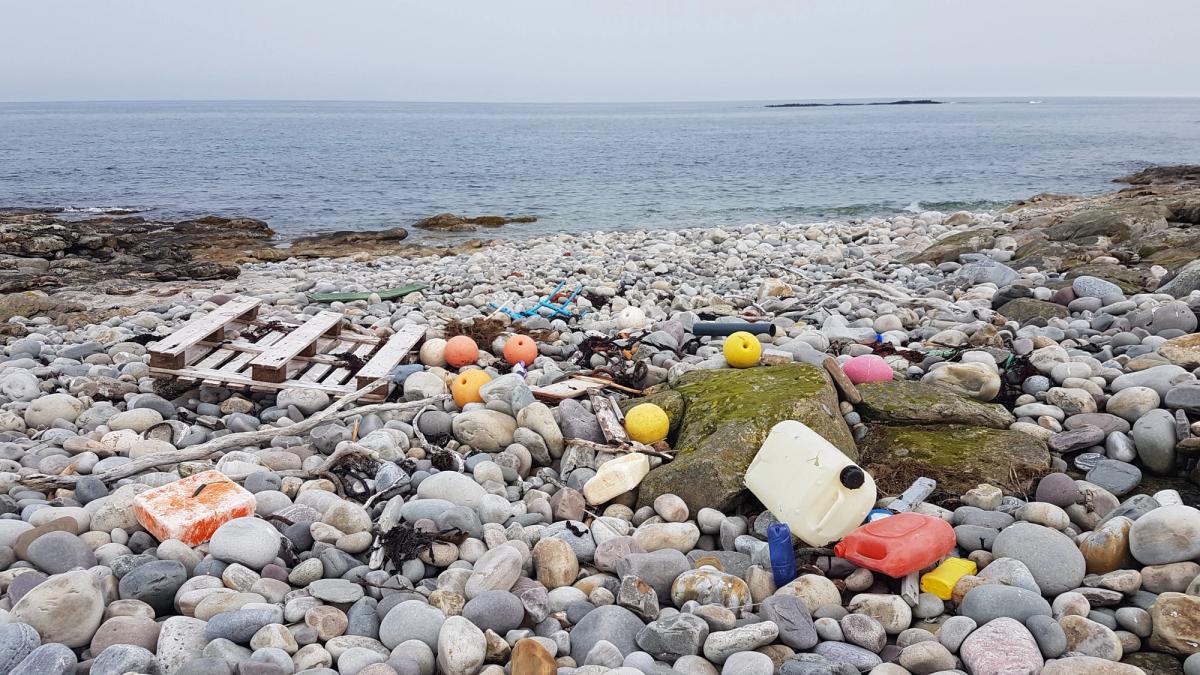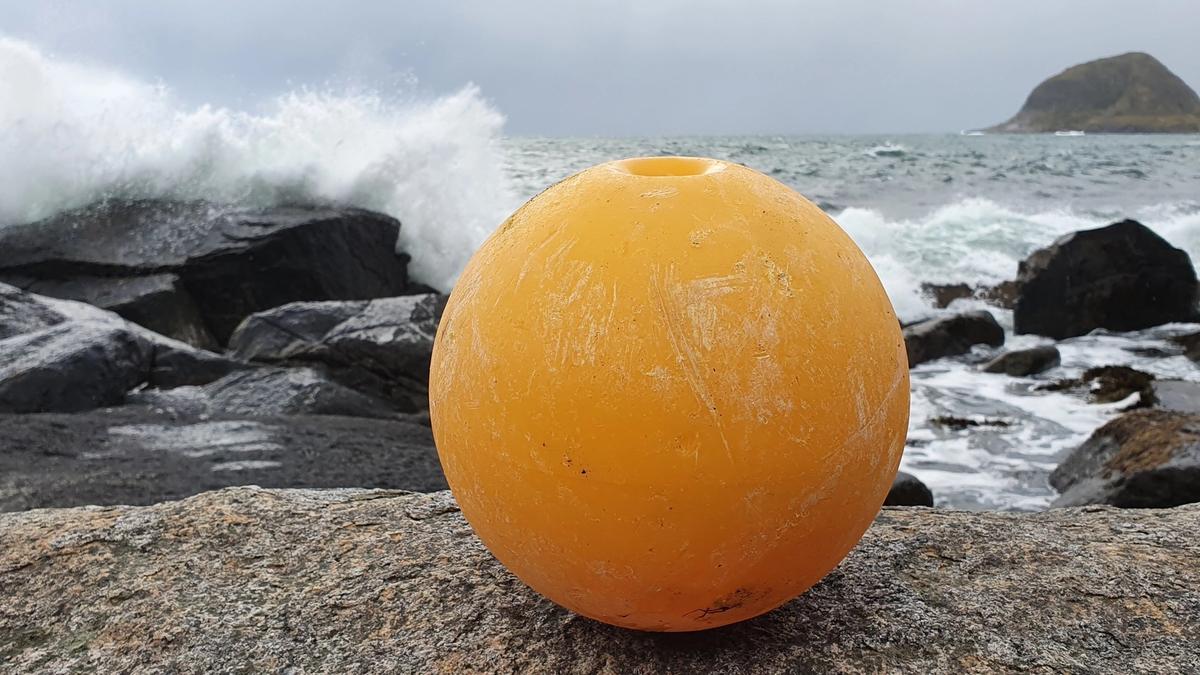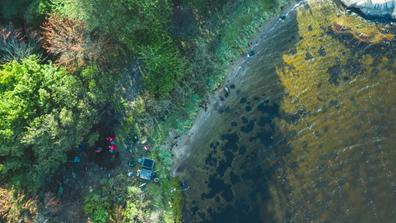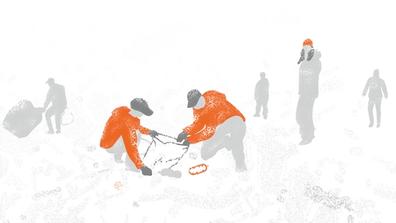Marine litter - the purpose of and challenges associated with clean-up activities.
Marine litter is a global problem that is difficult to manage. Everybody has a responsibility to keep the ocean and the marine environment clean. In Norway, many people contribute to the clean-up work and invest countless hours of work to clean up along the coast, which is something that should be greatly respected.
We know that clean-up activities make a difference. We can prevent birds and animals from getting entangled in or eating marine waste by removing the waste from coastal areas and beaches. Clean-up activities are also useful in preventing waste from returning to the ocean and spreading further. Plastic waste that is not collected will be degraded into microplastics and nanoplastics and may be absorbed into the food chains.
To clean up a beach or along the coast can be a simple matter but it can also be very challenging. The term beach cleaning has a broader meaning than simply the clean-up of a beach. The Norwegian coastline consists of different landscapes and many inaccessible and vulnerable areas. There are different beach types, smooth coastal rock slopes, reed areas, mountains, challenging terrain to move around in and remote coves that can only be accessed by boat. The guideline is also relevant to the cleaning of lakes and watercourse, where you can also face other challenges.
Some areas are easily accessible and can be cleaned by private individuals and volunteers. In more demanding areas, there are stricter requirements concerning expertise, experience, systematic HSE work and equipment. These areas should be cleaned by professional clean-up operators. The amount and type of litter will also influence who is suitable to clean an area.
Participating in beach clean-up operations can provide fantastic experiences of nature, a great sense of community with others and the feeling of contributing towards the efforts for a cleaner ocean.

Purpose and target group
The Norwegian Centre for Oil Spill Preparedness and Marine Environment has developed a national guideline describing best practices for the clean-up of marine litter. The purpose of the guideline is to take care of the health and safety of clean-up personnel, protect the environment and make the planning and execution more efficient.
The guideline has been developed for organisers and clean-up personnel but may also be useful for other target groups. Organiser refers to those who plans and organises a clean-up operation. The guideline can be used in many ways. The basic principles of the guideline apply to all types of clean-up operations, whether large or small. Whether you are going to clean a beach together with a school class or preform a larger, professional clean-up in a more inaccessible place, you may use different parts of the guideline. As a participant in a clean-up operation, you may find adequate information through the article A Clean-up Operation and the Checklist for Clean-up Personnel. If you are an organiser, you may find it useful to read through several articles and both checklists.
The structure of the guideline in brief
The guideline consists of articles and checklists. There is a checklist available for those who organise clean-up operations, as well as a checklist for those participating in a clean-up operation. The articles contain background material on relevant topics.
Kort om oppbygning av veilederen
Veilederen består av artikler og sjekklister. Det finnes en sjekkliste for deg som er arrangør av en ryddeaksjon og en for deg som er deltaker på en ryddeaksjon.
Avgrensninger
Marin forsøpling er alt fast materiale fra menneskelig aktivitet som er forlatt eller på annen måte havner i det marine miljøet. Beholdere med avfall i væskeform, som spillolje og andre kjemikalier, er også marin forsøpling i denne sammenhengen. Marin forsøpling inkluderer både avfall fra sjøbaserte og landbaserte kilder som ender opp i det marine miljøet.
Denne veilederen tar for seg opprydding av eierløst avfall, det vil si avfall som man ikke kjenner kilden til. Vi kaller det eierløst fordi det ikke kan spores til en person som juridisk kan oppfattes som eier av avfallet. Oppdager du forsøpling utenfor en bedrift eller du vet hvem forurenseren er skal du melde inn forsøplet område til kommunen som er lokal forurensningsmyndighet eller Statsforvalteren.
Rydding av marin forsøpling på Svalbard er ikke behandlet eksplisitt i denne veilederen. Her er Sysselmannen en viktig aktør, og det noen spesielle regler og faremomenter som må tas hensyn til.
Takk
Vi ønsker å rette en stor takk til de som har bidratt i arbeidet med veilederen; Oslofjordens Friluftsråd, Bergen- og Omland Friluftsråd, Lofoten Avfallsselskap, Naturvernforbundet, Tromsø kommune og In The Same Boat.
Flere aktører har allerede utarbeidet veiledere for strandrydding, og vi vil også gjerne rette en takk til organisasjonene som står bak de veiledere vi har hentet inspirasjon fra.
If the pdf does not include images, please click Cancel and try again.





